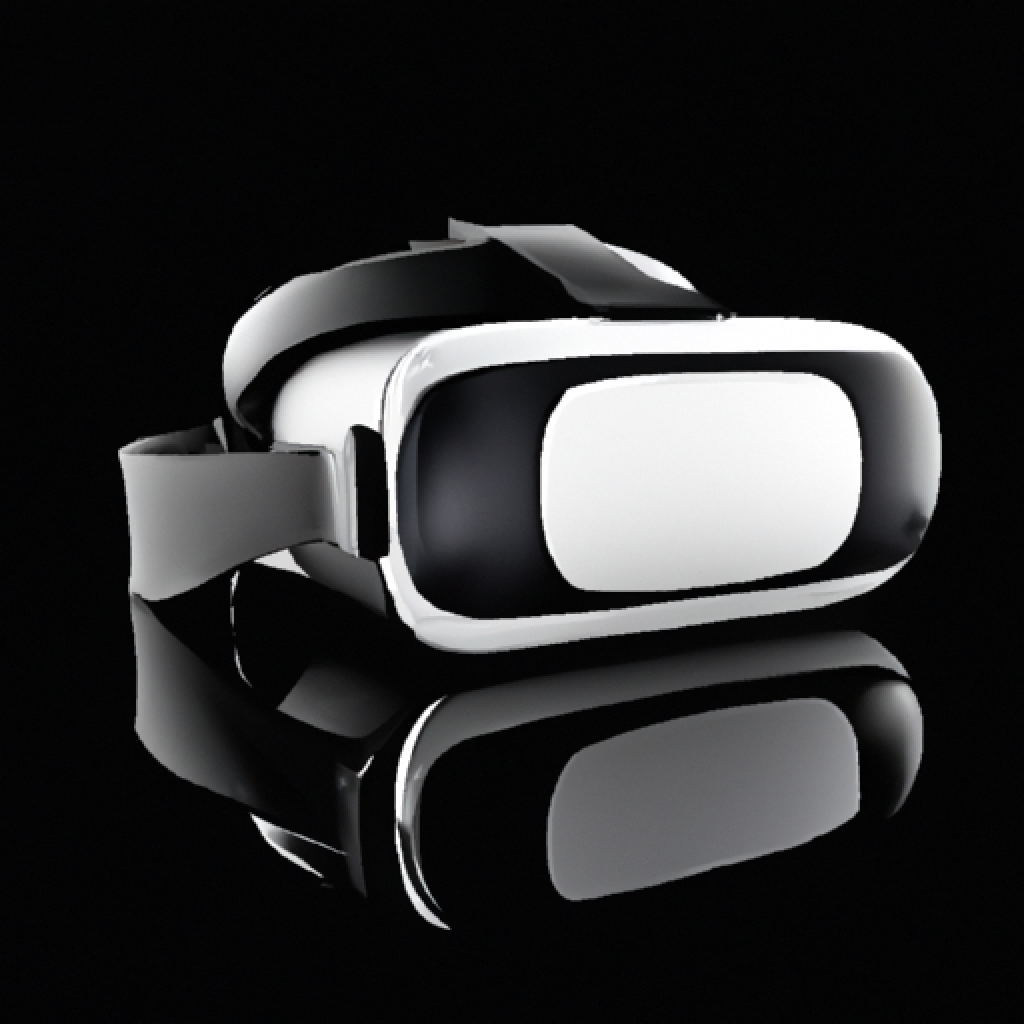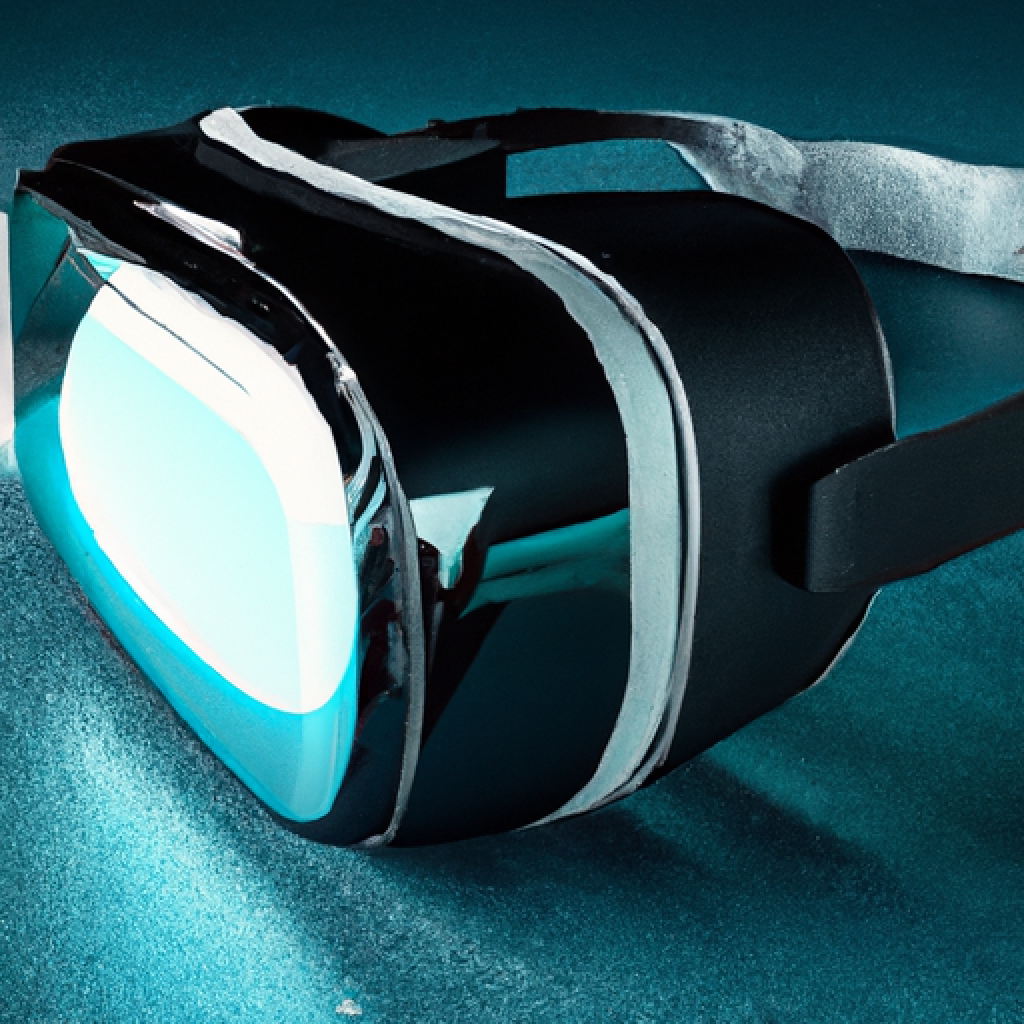Can You Watch Anything In VR?

So you’ve heard about virtual reality (VR) and you’re wondering if there are any limits to what you can actually watch using this cutting-edge technology. Well, the short answer is: no. Whether you’re craving the immersive experience of an action-packed movie, itching to catch your favorite TV shows in a whole new dimension, or even yearning to witness a live concert from the comfort of your own living room, VR has got you covered. With a VR headset and a whole range of content available, you can transport yourself to virtually any place and immerse yourself in any kind of entertainment you desire. The possibilities are endless, and the only thing holding you back is your imagination.

Understanding the Concept of Virtual Reality
Virtual Reality (VR) is an immersive technology that aims to create a realistic simulated environment, providing users with a sense of presence and visual experiences that mimic the real world or an imagined one. It allows individuals to interact with a digital environment and its objects using specialized hardware and software. The concept of VR involves the use of headsets or goggles that cover the user’s eyes, blocking out the real world and replacing it with a virtual one. This technology has gained significant popularity in recent years, revolutionizing various industries and providing users with unique and engaging experiences.
Definition of Virtual Reality
Virtual Reality can be defined as a computer-generated simulation of a three-dimensional (3D) environment that can be interacted with in a seemingly real or physical way by an individual using certain electronic devices, such as VR headsets or goggles. It encompasses a wide range of technologies and techniques, including graphics, sound, and tactile feedback, to create an illusion of reality and to immerse the user in a virtual world. The goal of VR is to make the user feel as if they are truly present in the virtual environment, allowing for a more realistic and engaging experience.
How Virtual Reality Works
Virtual Reality works by combining various technologies and techniques to create an immersive and interactive experience. It begins with the user wearing a VR headset or goggles, which typically consists of two small screens, one for each eye, and lenses to focus and magnify the images. These screens display the virtual environment, while the lenses help create a wider field of view and reduce the feeling of looking through a screen. The headset also contains motion sensors, accelerometers, and gyroscopes to track the user’s head movements and provide a sense of presence in the virtual world.
The VR software or application processes the user’s head movements and adjusts the on-screen display accordingly to create a seamless and immersive experience. It takes into account factors such as the user’s position, orientation, and head-tracking data to render the virtual environment in real-time. The software also incorporates other sensory inputs, such as audio and haptic feedback, to enhance the overall immersion and realism. Additionally, controllers or hand-tracking devices may be used to interact with objects or navigate within the virtual world.
Hardware and Devices used in VR Technology
Virtual Reality technology relies on specialized hardware and devices to create and deliver the immersive experience. The primary and most recognized hardware component is the VR headset or goggles. These devices, such as the Oculus Rift, HTC Vive, or PlayStation VR, are typically worn on the head and encompass the user’s field of view, blocking out the actual surroundings and replacing them with the virtual environment.
In addition to the VR headset, there are other peripheral devices that enhance the VR experience. These include motion controllers, which enable users to interact with objects in the virtual world, and handheld devices that provide haptic feedback, allowing users to feel the virtual objects. Some VR systems also incorporate additional accessories like tracking sensors or cameras to detect the user’s movements and provide a more accurate and responsive experience.
The hardware requirements for VR can vary depending on the system and the desired level of immersion. Some VR setups require a powerful gaming PC or gaming console, while others may utilize mobile devices or standalone headsets with built-in processing capabilities. Regardless of the hardware used, VR technology continues to evolve and become more accessible to a wider audience.

Types of content available in VR
Virtual Reality offers a wide range of content options that cater to different interests and preferences. From immersive games to virtual tours and educational experiences, VR content allows users to explore and engage with various digital environments. Here are some of the types of content commonly available in VR:
VR Games
One of the most popular forms of VR content is virtual reality games. These games are specifically designed to take advantage of the immersive nature of VR technology, allowing players to become fully engaged in the virtual world. VR games can range from thrilling and action-packed experiences to more casual and relaxing gameplay. With the ability to interact with objects and environments in a realistic manner, VR games provide a unique and immersive gaming experience.
VR Movies and TV Shows
VR technology has opened up new possibilities for the entertainment industry, allowing for the creation of immersive movies and TV shows. With VR movies, viewers can step into the virtual world and experience the story from a first-person perspective. They can look around in all directions and feel like they are part of the action. VR movies and TV shows often provide a more immersive and engaging experience compared to traditional 2D viewing, making it feel like you’re actually inside the movie.
VR Tours and Explorations
Virtual reality tours and explorations offer users the opportunity to visit places they may not be able to access in person. Whether it’s exploring ancient landmarks, touring museums, or visiting distant planets, VR tours provide a unique and educational experience. Users can navigate through virtual environments and interact with objects to learn more about their surroundings. These virtual tours offer a new way to travel and learn about the world from the comfort of your own home.
Educational VR Content
Virtual Reality has also made its way into the field of education, providing students with immersive and interactive learning experiences. Educational VR content covers a wide range of subjects, from science and history to art and geography. Students can explore scientific phenomena, witness historical events, or create art in a virtual environment. The immersive nature of VR helps enhance learning retention and engagement, making it an effective tool for educational purposes.
VR Applications in Health and Sciences
VR technology is finding valuable applications in the field of healthcare and sciences. It is being used for medical training, patient therapy, and surgical simulations. With VR, medical professionals can practice procedures and surgeries in a safe and controlled environment, reducing the risk of errors during real-life operations. VR is also being utilized in therapies for anxiety disorders, phobias, and post-traumatic stress disorder (PTSD), providing a controlled environment for exposure therapy.
Overall, the types of content available in VR continue to expand as the technology advances. From gaming and entertainment to education and healthcare, VR offers a diverse range of experiences that cater to different interests and industries.
Watching Traditional Content in VR
One of the intriguing aspects of Virtual Reality is the ability to watch traditional 2D content, such as movies, TV shows, and videos, within a VR environment. While VR is primarily known for its immersive and interactive experiences, it also provides an alternative way to consume non-VR content.
Experiencing 2D Content in a VR Environment
When watching traditional 2D content in VR, the virtual environment acts as a cinema or a theater. Users can virtually sit in a virtual theater and have their favorite movie or TV show displayed on a virtual screen that appears larger than life. The VR headset creates a sense of presence and transforms the viewing experience by giving the illusion of being in a private cinema. The virtual environment can be customized, allowing users to choose their preferred seating arrangement, background ambiance, and even invite friends to join them in the virtual theater.
Benefits of Watching Non-VR Content in VR
Watching non-VR content in VR offers several benefits and enhancements to the viewing experience. Firstly, the sense of immersion provided by the VR headset can make the content feel more engaging and captivating. The large virtual screen and 3D audio can create a cinema-like experience, making users feel like they are part of the movie or show. The ability to customize the virtual environment further enhances the personalization aspect, allowing users to create their ideal viewing space.
Additionally, watching non-VR content in VR can eliminate external distractions, as the virtual environment blocks out the real world and reduces the chances of interruptions. It provides a more private and focused viewing experience, where individuals can fully immerse themselves in the content without external disturbances. This can be particularly beneficial for individuals who live in busy environments or have limited access to a dedicated home theater setup.
Challenges and Limitations of Watching Non-VR Content in VR
While watching non-VR content in VR can provide an enhanced and immersive experience, there are also some challenges and limitations to consider. One of the primary challenges is the resolution and image quality. VR headsets typically have a finite resolution, and when used to display non-VR content, the resolution gets spread across a larger virtual screen. This can result in a perceived decrease in image sharpness and clarity compared to watching the content on a physical screen.
Another limitation is the discomfort that can arise from wearing a VR headset for extended periods. While advancements in headset design have made them more comfortable over the years, some users may still experience discomfort or fatigue after prolonged use. Additionally, individuals who are prone to motion sickness may find it more challenging to watch non-VR content in VR, as the movement of the virtual environment can exacerbate symptoms of motion sickness.
It is also worth noting that not all streaming platforms or content providers support VR playback. While some major platforms like YouTube and Netflix offer VR modes or dedicated VR applications, many others may not have VR-compatible versions of their apps or websites. This limitation can restrict the availability of non-VR content in VR and limit the options for users who want to explore a wide range of content.
Despite these challenges and limitations, watching non-VR content in VR can offer a unique and immersive viewing experience. It provides an alternative way to consume traditional content and adds a new dimension to the overall entertainment experience.

Streaming platforms that support VR Content
As the popularity of Virtual Reality continues to grow, so does the availability of VR content on streaming platforms. Some of the well-known platforms that support VR content include:
YouTube VR
YouTube VR is a dedicated platform for viewing and sharing VR content. It allows users to access a vast library of VR videos, ranging from 360-degree videos to immersive VR experiences. YouTube VR supports various VR headsets and provides an intuitive interface for navigating through different VR channels and content categories.
Hulu VR
Hulu VR is a virtual reality extension of the popular streaming platform Hulu. It offers a selection of VR content, including movies, TV shows, and original VR programming. The platform provides a virtual living room environment where users can adjust their virtual seating and screen size while enjoying their favorite shows or movies.
Netflix in VR
Netflix, one of the leading streaming platforms, also offers VR compatibility for select VR headsets. With Netflix VR, users can watch their favorite TV shows and movies in a virtual living room environment. The app allows for customization of the virtual environment, such as choosing different virtual locations or seating arrangements.
Facebook 360
Facebook 360 is a platform for sharing and viewing immersive 360-degree photos and videos. It provides a wide range of content from individual users, media companies, and organizations. Facebook 360 supports VR playback, allowing users to experience the content in a more immersive and interactive way.
Daydream
Daydream is Google’s VR platform that offers various VR experiences, games, and apps. It includes a range of content categories, such as entertainment, education, and gaming. Daydream supports various VR headsets and provides a curated selection of VR content for users to explore.
These streaming platforms, among others, are continuously expanding their VR content offerings, providing users with access to a wide variety of virtual reality experiences. The availability of VR content on these platforms demonstrates the growing interest and demand for immersive entertainment experiences.
Physical Aspects of Experiencing VR Content
Engaging with Virtual Reality content involves more than just wearing a VR headset and navigating through a virtual environment. It also has physical implications and considerations that users should be aware of. Here are some physical aspects to consider when experiencing VR content:
Effects on Vision
Extended use of VR headsets can potentially have an impact on vision, particularly for individuals with underlying vision problems. The distance at which the images are displayed in VR, the focal length, and the strain imposed on the eyes due to prolonged near-focus viewing can contribute to eye fatigue and discomfort. It is important to take breaks and limit the duration of VR sessions to avoid excessive eye strain.
Moreover, the refresh rate of the VR display can affect the visual experience. Low refresh rates may cause motion blur and decrease visual clarity, which can be particularly noticeable in fast-paced VR games or experiences. Higher refresh rates typically result in smoother and more comfortable VR visuals, reducing the chances of discomfort or eye fatigue.
VR and Motion Sickness
Motion sickness can be a common challenge when experiencing VR content. The sensory disconnect between the virtual and real worlds can cause a mismatch in the brain’s perception of motion, leading to symptoms such as nausea, dizziness, and headaches. This is especially true when the virtual environment involves rapid movements or simulated motion that conflicts with our body’s senses.
To mitigate the risk of motion sickness, VR experiences should be paced appropriately, with gradual exposure to intense or simulated motion. It is also recommended to take breaks during VR sessions, especially if any discomfort or symptoms arise. Additionally, some VR applications and games offer comfort settings, such as reducing field of view or adding snap-turning, to help minimize the risk of motion sickness.
Precautions to Take when Using VR Devices
When using VR devices, it is essential to take certain precautions to ensure a safe and comfortable experience. Here are some general guidelines to follow:
- Choose a comfortable and well-fitting VR headset. Make sure to adjust the straps and fit the headset properly to minimize discomfort or slippage during use.
- Be aware of the physical space around you. Clear any obstacles or furniture that could potentially cause accidents or collisions while immersed in VR.
- Take frequent breaks to avoid fatigue and eye strain. Engaging in VR for extended periods can be mentally and physically tiring, so it’s important to listen to your body and give yourself time to rest.
- Maintain good posture and avoid excessive neck or back strain. Long VR sessions may involve extensive head movements, so it’s crucial to maintain proper posture and take breaks to prevent any discomfort or strain.
- Follow the manufacturer’s guidelines for the specific VR device you are using. This includes considerations such as recommended age range, device maintenance, and operating temperature.
Taking these precautions into account can help ensure a safer and more enjoyable VR experience.

Social Impacts of Watching Content in VR
The social aspects of watching content in Virtual Reality present both opportunities and considerations. VR has the potential to create shared experiences, impact privacy and security, and raise ethical considerations.
Creating Shared Experiences through VR
One of the significant appeals of VR is its potential to create shared experiences. VR allows individuals to virtually meet and interact with others, regardless of physical distance. Gathering in a virtual environment, whether it’s a virtual theater or a virtual meeting room, can provide a sense of presence and facilitate collaboration and engagement. This opens opportunities for group activities such as virtual movie nights, virtual meetings, and remote socializing.
VR also offers multiplayer gaming experiences, where players can meet and interact with others in a virtual world. This social interaction can foster a sense of community, teamwork, and competition, similar to traditional gaming experiences but enhanced by the immersive nature of VR.
Privacy and Security in VR
As VR platforms and applications become more social, privacy and security considerations become increasingly important. When engaging with others in VR, it is crucial to be mindful of personal boundaries and the potential for privacy breaches. Users should be cautious about sharing personal information, be aware of the privacy settings of VR platforms, and understand the implications of recording or streaming VR experiences.
Virtual reality also raises concerns about surveillance and data collection. As VR systems track user movements and interactions, there is a potential for the collection and analysis of personal data. It is essential for users to be aware of the privacy policies and data handling practices of VR platforms and applications to make informed decisions about their personal information.
Ethical Considerations in VR
VR presents unique ethical considerations, particularly in the context of creating and experiencing VR content. There are concerns about the potential for dehumanization and desensitization to violence or other harmful behaviors in realistic VR simulations. Content creators and developers need to consider ethical guidelines and standards when designing and producing VR experiences to ensure they promote positive or educational outcomes.
The potential for addiction or excessive use of VR also raises ethical concerns. As VR content becomes more immersive and engaging, individuals may find it challenging to balance their virtual experiences with real-life responsibilities. It is crucial for users to be mindful of their VR usage and maintain a healthy balance between virtual and real-life activities.
Overall, as VR technology becomes more integrated into society, it is essential to consider the social implications and ethical considerations to ensure a responsible and positive VR experience.
Immersiveness of VR Content
One of the key characteristics of Virtual Reality is its ability to provide a highly immersive experience. Compared to traditional viewing experiences, VR offers a level of immersion that can transport users to new worlds and create a stronger sense of presence. Here, we explore the differences in immersiveness between VR and traditional viewing experiences, the immersive properties of VR, and the role of interactivity in enhancing immersion.
Differences between VR and Traditional Viewing Experiences
The main difference between VR and traditional viewing experiences lies in the level of immersion and interaction. Traditional viewing experiences, such as watching a movie on a screen, are passive and involve a sense of detachment from the content. While viewers can be emotionally engaged, they are limited to observing the content from a distance.
In contrast, VR provides a higher degree of immersion by allowing users to actively engage and interact with the virtual environment. Users have the ability to explore the virtual world, interact with objects and characters, and influence the narrative or outcome of the experience. This interactivity contributes to a stronger sense of presence and engagement, making the VR experience feel more realistic and personal.
Immersive Properties of VR
The immersive properties of VR are what make the technology so captivating and engaging. The combination of visuals, audio, and interactivity helps create a sense of presence and transports users to a virtual world. Some of the key immersive properties of VR include:
-
Visual immersion: VR headsets provide a wide field of view and high-resolution displays, making the virtual environment appear more expansive and detailed. The ability to look around and see a fully rendered 3D world adds to the feeling of immersion.
-
Audio immersion: Virtual Reality often incorporates spatial audio, where sounds are mapped to specific locations in the virtual environment. This creates a more realistic and immersive auditory experience, as sounds appear to come from their corresponding sources. Spatial audio adds to the sense of presence by providing audio cues that align with the visual experience.
-
Sensory immersion: Beyond visuals and audio, VR can incorporate other sensory inputs to enhance immersion. This includes haptic feedback devices that provide tactile sensations, such as vibrations or pressure, to mimic the sense of touch. Smells or scents can also be introduced to further enhance the sense of immersion, especially in VR experiences that involve specific environments or scenarios.
These immersive properties work together to create a convincing and engaging virtual experience, blurring the boundaries between the real and virtual worlds.
The Role of Interactivity in VR
Interactivity plays a crucial role in enhancing immersion and engagement in Virtual Reality. The ability to interact with objects, characters, and the virtual environment itself allows users to become active participants rather than passive observers.
Interactivity can take various forms in VR, ranging from simple interactions such as picking up virtual objects or pressing buttons, to more complex interactions involving realistic physics or AI-driven characters. The level of interactivity often depends on the design and objectives of the VR experience. For example, a VR game may offer intricate interaction mechanics, while a VR movie may focus more on guiding the viewer’s attention and creating a narrative experience.
The sense of agency and control that comes with interactivity enhances the feeling of presence and immersion. Users can influence the virtual world and shape the outcome of their experiences, which can result in a more fulfilling and personalized immersion.

Watching Live Events in VR
Virtual Reality has the potential to transform the way we experience live events, bringing us closer to the action no matter where we are. Here are some ways in which live events can be enjoyed in VR:
Experience of Live Sports in VR
Watching live sports in VR offers a unique and immersive perspective for fans. By putting on a VR headset, viewers can feel like they are sitting courtside, ringside, or in the stands of their favorite sporting events. VR cameras placed strategically around the venue capture the action from various angles, providing an enhanced viewing experience. Viewers can look around in all directions and feel immersed in the atmosphere of the event. Some VR platforms even offer additional features such as live stats and interactive elements to further enhance the sports-watching experience.
VR has the potential to bring live sports to individuals who may not have access to the physical event or live in a different location. It can also provide unique camera angles and perspectives that are not possible with traditional broadcasts, offering a fresh and exciting way to engage with sports.
Music Concerts and Festivals in VR
Watching music concerts and festivals in VR opens up new possibilities for music enthusiasts. With VR, users can virtually attend shows and experience the energy and ambiance of live performances. VR cameras positioned on the stage or within the crowd capture the performance in 360-degrees, allowing users to select their vantage point and truly feel like they are part of the audience. Virtual reality concerts can include interactive elements, such as choosing different camera angles or accessing behind-the-scenes content, providing a personalized and immersive music experience.
VR concerts and festivals can bring live music to individuals who may not have the opportunity to attend in person and offer an alternative way to enjoy the excitement of live performances.
Social and Cultural Events in VR
Virtual Reality also enables the experience of social and cultural events in a new way. From art exhibitions and museum tours to conferences and virtual trade shows, VR can recreate the immersive atmosphere of these events and allow individuals to participate remotely. Users can explore interactive virtual spaces, engage with exhibits or presentations, and interact with other attendees from around the world. This opens up opportunities for collaboration, networking, and learning, making it possible to participate in events regardless of geographical location or physical limitations.
Virtual Reality has the potential to revolutionize not only how we attend live events but also the accessibility and inclusivity of these experiences. It can bring people together, create shared moments, and bridge the gap between physical and virtual interactions.
Future of Watching Content in VR
As Virtual Reality continues to evolve and improve, it opens up exciting possibilities for the future of content consumption. Here are some anticipated trends and innovations in VR technology and content creation:
Upcoming Innovations in VR Technology
The future of VR technology promises advancements in areas such as display resolution, field of view, comfort, and mobility. Higher-resolution displays will enhance visual fidelity and reduce the screen-door effect, where the gaps between pixels are visible. Expanding the field of view will provide a more immersive and natural viewing experience. Comfort improvements will focus on reducing the weight and size of VR headsets and improving ergonomics for extended use. Additionally, advancements in wireless technology and standalone headsets will enhance mobility, allowing users to experience VR without being tethered to a PC or gaming console.
Hand and finger tracking technology is another area of development in VR. This technology aims to provide more natural and intuitive ways of interacting with the virtual environment, eliminating the need for handheld controllers. Hand tracking can offer a more immersive and tactile experience by allowing users to use their hands and fingers to manipulate objects in the virtual world.
Trends in VR Content Creation
The future of VR content creation will likely see an expansion of immersive storytelling techniques and interactive narratives. Content creators will continue to explore innovative ways to engage users and provide personalized experiences. This could involve branching storylines, adaptive narratives that respond to user choices, or dynamically generated content based on personal preferences.
Furthermore, VR content is expected to become more social and collaborative, with a focus on creating shared experiences. Multiplayer VR games and social VR platforms will continue to evolve, enabling users to interact with each other in virtual environments and connecting people across geographical boundaries.
Another emerging trend in VR content creation is the integration of augmented reality (AR) and mixed reality (MR) elements. By combining the real world with virtual elements, users can experience a more seamless blend of physical and digital content. This integration offers new creative possibilities for applications ranging from education and productivity to entertainment and gaming.
Potential Impact on Entertainment Industry
Virtual Reality has the potential to revolutionize the entertainment industry by providing more immersive and interactive experiences. With the increasing availability of VR headsets and a growing catalog of VR content, mainstream adoption of VR entertainment is becoming a reality. The flexibility and engagement of VR experiences can redefine how we consume movies, TV shows, and games, offering a level of immersion that traditional mediums cannot match.
The entertainment industry is already witnessing the integration of VR technologies and experiences into various forms of media. VR movies and TV shows are becoming more prevalent, with dedicated platforms and production studios focusing on creating immersive content. The gaming industry, in particular, has embraced VR, with numerous VR games and experiences being developed to cater to a growing audience of gamers.
As the technology advances and user adoption increases, we can expect VR to have a significant influence on the entertainment industry. It has the potential to transform the way we experience and consume content, opening up new creative opportunities, and redefining what is possible in entertainment media.
Conclusion: Can You Watch Anything in VR?
In conclusion, Virtual Reality offers a wide range of content options and immersive experiences that cater to various interests and industries. Whether it’s gaming, movies, concerts, or educational experiences, VR provides a unique and engaging way to interact with digital content.
While the primary focus of VR is on immersive experiences, it also allows for the viewing of traditional non-VR content. Watching movies, TV shows, and videos in a virtual environment can provide an enhanced and personalized viewing experience, although there are challenges and limitations to consider.
The availability of VR content is expanding, with streaming platforms like YouTube, Hulu, Netflix, and Facebook 360 supporting VR playback. These platforms offer a growing library of VR content and contribute to the increasing popularity and accessibility of VR.
Engaging with VR content can have physical implications, such as effects on vision and the potential for motion sickness. It is important to take precautions and be aware of one’s physical well-being while using VR devices.
The social impacts of VR include creating shared experiences, privacy and security considerations, and ethical implications. VR has the potential to foster collaboration and social interaction, but also requires careful consideration of privacy, data handling, and ethical content creation.
The immersiveness of VR content sets it apart from traditional viewing experiences, offering a sense of presence and interactivity that amplifies the viewing experience. Interactivity plays a crucial role in enhancing immersion, allowing users to actively engage with the virtual environment and shaping their own experiences.
VR has also opened up new possibilities for experiencing live events, from sports to music concerts and cultural gatherings. By donning a VR headset, users can virtually attend these events and feel a sense of presence and participation.
The future of watching content in VR looks promising, with advancements in technology, trends in content creation, and potential impacts on the entertainment industry. Higher display resolutions, increased interactivity, and social integration are among the anticipated developments.
In summary, Virtual Reality provides a flexible and immersive platform for watching and experiencing various forms of content. While there may be limitations and considerations, the potential for transformative and engaging experiences in VR is vast. As the technology continues to evolve, it is exciting to see how VR will shape the future of content consumption.







